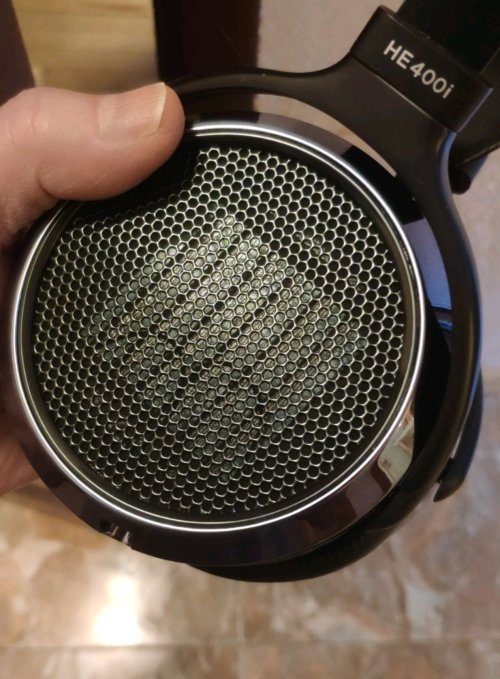H I F I M A N - S U N D A R A - R E V I E W
Hello all.
Got a pair of Sundaras and have been listening to them for a while.
Would like to share my experiences with you, since there are not many proper reviews on the net on them.
Reference units used:
> Sennheiser HD600, HD650, HD800
> Audeze LCD3
> Hifiman HE-4, HE-6, HE1000 V2
> Focal Utopia
---------------------------------------------------------------------------------------------------------------------------------------
Pros:
+ High(er) sensitivity than previous (older Hifiman) models
+ Improved quality of construction and assembly
+ Much better connectors and cable, and nice storage box
+ Effortless presentation
+ Dynamics and clarity in the low frequency region.
+ Much more coherent across the spectrum than previous Hi-end models (HE1000 v2).
+ Great imaging capabilities.
+ Very laid back midrange response (+)
Cons:
- A "coarse" construction that still feels.... well...cheap (compared to Sennheiser 600/650/660)
- A very audible "shelf-like" low pass response, lacking high frequency extension.
- Lacking clarity (against more expensive units), and thus feeling less "precise"
- Excessively "warm" sounding and rolled-off.
- Very laid back midrange response (-)
- Small earpads (Focuspads) and not very comfortable on slightly bigger ears.
Verdict:
Actually a solid performer, capable of painting an effortless, large, deep and pleasing picture of the sonic event, with almost
no signs of harshness or edge.
Low frequencies exhibit wonderfull solidity and articulation that is unheard of for the price.
Laid back, rolled-off and warm character that will suit many different (hard sounding/grainy) amplifiers.
Its overall performance was surprisingly ever so slightly superior to that of Hifiman HE1000-V2 which sounded a little less homogeneous, a little less balanced and slightly more grainy
across the board.
This could serve as a very good pair of all-round headphones for many, maybe even an end-game headphone for some.
Yes, it is a really that good.
PLEASE: LISTEN FOR YOURSELVES AND DECIDE FOR YOURSELVES.
---------------------------------------------------------------------------------------------------------------------------------------------------------------------------------------------------------------------------------
R E V I E W :
It is apparent that Hifiman is aiming to please reviewers like Tyll Hertsens (who has repeatedly stated that
he favors laid-back treble response) by altering the frequency response and the sonic characteristic of their headphones.
This is not a sin.
Every manufacturer does this, and it is a quite smart and logical way to profit.
A good/bad review can make or break a product.
Hifiman used to have (my opinion) probably the BEST treble response in headphone-dom.
The airy, shimmering, smooth, utterly transparent and effortless sonic character that Hifiman was famous for in the past is now
gone and been replaced by an equally effortless, but much darker and "veiled" presentation that will undoutedly be more forgiving and more to the liking of reviewers.
The high frequency resolution of the Hifiman headphones was a problem in the past:
Because of this articulation and clarity, they often sounded accentuated and piercing in the highs when coupled to mainstream amps.
However, switching from Hifiman HE-4/HE-6, or even Sennheiser HD800 to the Sundaras made one thing very apparent:
A very obvious shelf-like "drop" of the output level beyond approx 2 kHz (I have no measurements), leading to a somewhat veiled and opaque
presentation that left me at times - much like when I audition Audeze units - longing for more clarity. (This is of course an unfair comparison since the reference units are twice the price).****
On Al De Meola's "Opus in Green" (World Simfonia III, Telarc release), 5 min into the track, there is a tremendous amounts of low-level, wonderfully shimmering,
slightly sibilant cymbals, played and micked in the background, which helps create a hallucinatory ambiance and "air" that is absolutely intoxicating when played on other
reference units - but is unfortunately completely muted and absent through the Sundaras.
The low frequencies feel well extended (again - I have no measurements) and possess solidity and depth that help create a big and deep soundstage which is
superior to that of other reference units (with the exception of HE1000 V2), yet the soundstage lacks clarity and focus that gives a big, but wooly and diffuse picture of
musicians and instruments.
At the end, the warm character of the Sundaras can be both a curse and a blessing.
I must point out that my reference electronics is all Single-Ended with tubed Front-End, and I am sure this rolled-off presentation will be much appreciated on hard-hitting, clear-sounding OP-based, or
push-pull solid state electronics.
As mentioned, I compared it to much more expensive headphones which is unfair.
However, against the similarly priced Sennheiser HD600/650, the Sundaras were hands down, so absolutely superior in every way.
I felt them to be even superior in many ways, to Hifiman HE1000 V2 (which has severe problems in the mids and highs due to its large non-circular membrane - but that's another story).
Hifiman has commendably addressed this shortcoming in the Susvara, but it costs 6000 USD.
In comparison, Sennheiser HD600/650 sounded very grainy and coarse in the midrange and highs, not as resolving and articulated in the lows, and not at all as satisfying as the Sundaras.
I cannot think of any other headphones -->> AT THIS PRICE RANGE <<-- that can match Sundara's qualities.
A good match up would be to bright-sounding Class-A push pull amps/Dacs.
Best of luck to you all.
-----------------------------------------
*** Postscript:
Innerfidelity has now reviewed Sundara and done measurements.
Mids and highs DO NOT appear to be excessively rolled off, and the frequency response looks
linear and clean.





















 . She won’t let me remove the door on my salamander equipment rack, so its easier just to have another amp.,
. She won’t let me remove the door on my salamander equipment rack, so its easier just to have another amp., o
o